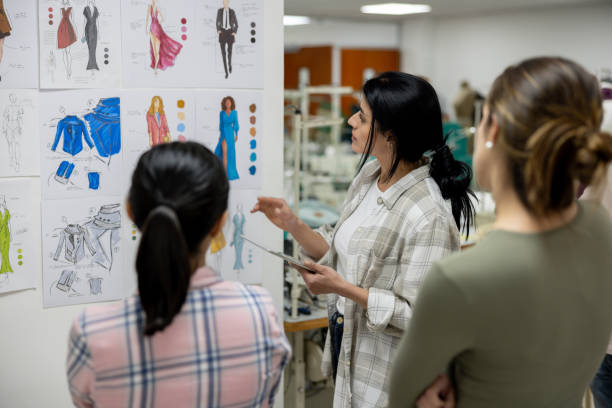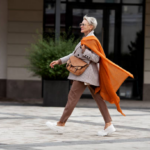The Intersection of Fashion and Politics: Historical Insights and Modern Influence
The intersection of fashion and politics is an intricate tapestry woven with symbolism, identity, and influence. Fashion often transcends its conventional realm to make powerful political statements, reflect societal values, and effect change. This article delves into the profound ways in which fashion and politics intertwine, shaping and reflecting our collective cultural narrative.
Historical Perspective: The Evolution of Political Fashion

Throughout history, clothing has been a potent platform for political expression. From monarchs whose garments signified their divine right to rule, to activists whose attire symbolized resistance and revolution, fashion has always conveyed power and ideology. In the 18th century, French Revolutionaries adopted the Phrygian cap as a symbol of liberty. Similarly, in the 1960s, the Civil Rights Movement saw activists donning practical and distinctive attire to signify unity and defiance.
These historical instances highlight how fashion is more than mere fabric; it is an emblem of social currents and political endeavors. Fashion has been both a conservative force, preserving status quo, and a radical voice, heralding change and challenging norms. Understanding this dynamic evolution enriches our comprehension of contemporary fashion politics.
Fashion as a Medium for Political Statements
Today, fashion continues to serve as a powerful medium for political statements. Designers and public figures often use their platforms to communicate messages on critical issues such as climate change, racial inequality, and gender rights. Prominent events, like the Met Gala and various fashion weeks, have seen celebrities and designers alike don attire that speaks volumes about their stances on pressing socio-political issues.
For instance, during the 2018 Golden Globes, many attendees wore black in solidarity with the Time’s Up movement against sexual harassment. Similarly, suffragettes were known for their strategic use of color—white, purple, and green—to symbolize purity, dignity, and hope. This strategic sartorial choice underscores fashion’s role in amplifying voices and driving social consciousness.
The Role of Brands in Political Fashion
Brands play a crucial role in the ongoing dialogue between fashion and politics. Major fashion houses have not shied away from integrating political themes into their collections. For example, Dior’s “”We Should All Be Feminists”” T-shirts reflect a clear stance on gender equality. This conscientious branding not only caters to an increasingly aware consumer base but also leverages the power of fashion to advocate for social change.
This trend is not confined to high fashion; streetwear brands often incorporate political messaging into their designs, making political fashion accessible to a broader audience. These brands champion causes such as environmental sustainability and fair trade, effectively transforming consumer choices into political acts. By aligning themselves with specific ideologies, brands influence public discourse and consumer behavior.
The Impact of Political Fashion on Society
Political fashion impacts society in multifaceted ways, from altering public perception to catalyzing movements. When influential figures publicly endorse causes through their clothing, it garners media attention and sparks widespread conversations. This ripple effect can lead to increased awareness and, in some cases, tangible social change.
Moreover, political fashion can also foster a sense of solidarity among like-minded individuals. Wearing a garment that symbolizes a shared cause can create a powerful sense of community. This collective identity can bolster the morale of movements and help to mobilize action. Thus, fashion extends beyond aesthetic appeal, acting as a unifying force for societal progress.
The Future of Fashion and Politics
Looking ahead, the relationship between fashion and politics is likely to grow even more intertwined. As global challenges such as climate change and social justice continue to dominate public discourse, the fashion industry is poised to play an increasingly important role. Designers and brands will likely continue to use their platforms to advocate for change and influence public opinion.
Technology and social media will further amplify this intersection, allowing political messages to be disseminated more widely and rapidly. As consumers become more conscientious, the demand for ethically produced and politically aware fashion will only increase. This symbiotic relationship suggests a future where fashion and politics are inseparable, each continually shaping and redefining the other.
Conclusion
The intersection of fashion and politics is a fascinating realm where aesthetics merge with ideology to influence societal change. From historical symbols to modern-day advocacy, clothing serves as a powerful medium for political expression. Designers, brands, and consumers all play pivotal roles in this dynamic interplay, shaping and reflecting the cultural currents of their times. As we move forward, the relationship between fashion and politics will continue to evolve, reflecting the ever-changing landscape of our world.
FAQs
1. How has fashion been used historically to make political statements?
Fashion has been used historically to convey power, ideology, and resistance. Monarchs wore garments that signified their divine right to rule, while revolutionaries and activists used specific attire to symbolize their causes. Historical examples include the Phrygian cap during the French Revolution and the strategic use of colors by suffragettes.
2. Can brands influence political opinions through fashion?
Yes, brands can significantly influence political opinions through fashion. By integrating political themes into their collections, brands like Dior and various streetwear labels advocate for social issues such as gender equality and environmental sustainability. This conscious alignment can shape public discourse and consumer behavior.
3. How do public figures use fashion to make political statements?
Public figures often use fashion to make political statements by wearing attire that symbolizes their stance on specific issues. For example, attendees at the 2018 Golden Globes wore black to support the Time’s Up movement against sexual harassment. Such sartorial choices garner media attention and spark social conversations.
Social media amplifies the impact of political fashion by enabling rapid and wide dissemination of political messages through clothing. Influencers, celebrities, and brands can reach global audiences instantly, making social media a powerful tool for advocacy and awareness in the realm of political fashion.
5. What does the future hold for the intersection of fashion and politics?
The future of the intersection between fashion and politics appears increasingly intertwined. As global challenges such as climate change and social justice continue to dominate public discourse, the fashion industry will likely play a more significant role in advocating for change. Social media and ethically conscious consumers will further integrate fashion with political activism.

